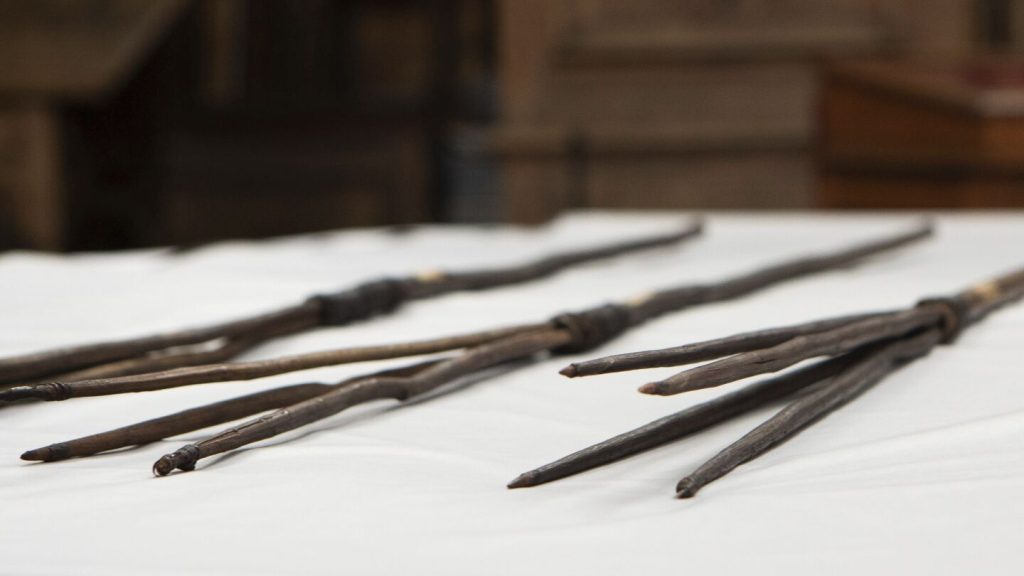The return of four Aboriginal spears taken to England by Captain James Cook over 250 years ago was a significant moment for Australia’s Indigenous community. The artifacts were the only remaining spears out of the 40 that Cook and botanist Joseph Banks took during the first contact between Cook’s crew and the Indigenous people of Kamay, or Botany Bay in 1770. The spears were presented to Trinity College, Cambridge in the 18th century and have been held at the university’s museum since the early 20th century. The decision to return the spears was hailed as a step towards reconciliation and a greater understanding of Britain and Australia’s shared history.
Sally Davies, head of Trinity College, emphasized that it was the right decision to return the spears and that the institution is committed to reviewing the complex legacies of the British empire, especially in their collections. The spears are considered exceptionally significant as they were the first artifacts collected by the British from any part of Australia that still exist. Nicholas Thomas, director of Cambridge’s archaeology museum, stated that the spears reflect the beginnings of a history of misunderstanding and conflict between the British and the Indigenous Australians.
The Gujaga Foundation, which leads cultural and research programs within the La Perouse Aboriginal community, expressed their excitement over the return of the spears, marking it as a momentous occasion. Ray Ingrey, the foundation’s director, highlighted that the spears were the first point of European, specifically British, contact with Aboriginal Australia. He mentioned that the spears will be permanently displayed at a new visitor center to be built at Kurnell, Kamay, allowing everyone to see them at the very spot they were taken from 250 years ago. The return of these artifacts signifies a recognition of the impact of colonialism on Indigenous cultures.
According to the National Museum of Australia’s website, the spears were taken by members of Cook’s expedition from an unoccupied Aboriginal campsite. A diary entry by Banks revealed that they took away all the lances or spears they could find about the houses, amounting to forty or fifty. Ingrey stated that the spears were undoubtedly taken without permission, highlighting the historical context of exploitation and disregarding of Indigenous rights. The return of the spears is seen as a significant step towards acknowledging the wrongdoing of the past and working towards reconciliation between the British and Indigenous communities.
The repatriation of the spears from Cambridge University to Australia’s Indigenous community symbolizes a form of justice for the past injustices committed against the Aboriginal people. The artifacts serve as a reminder of the colonial history between Britain and Australia, shedding light on the initial interactions marked by misunderstanding and conflict. The move to return the spears reflects a shifting narrative towards acknowledging and respecting Indigenous cultures and their rights. By displaying the spears at a new visitor center, the Indigenous community aims to educate the public about their history and heritage, fostering a better understanding of their experiences. This act of repatriation opens up a dialogue for reconciliation and healing between the British and Indigenous communities, paving the way for a more harmonious future.


